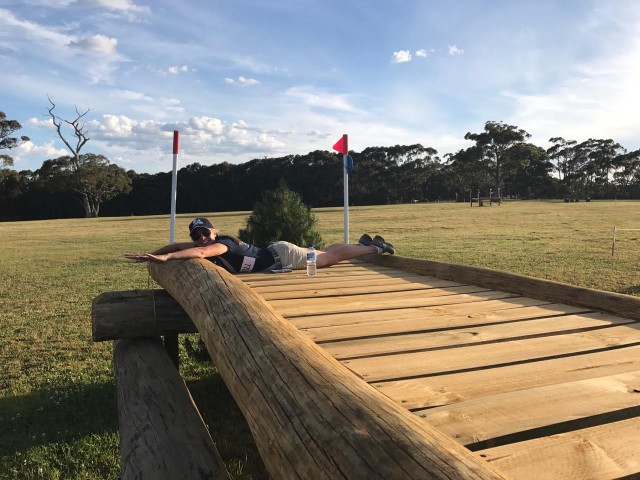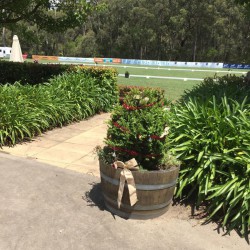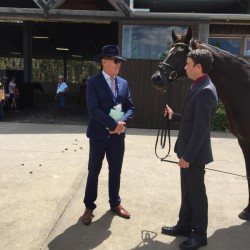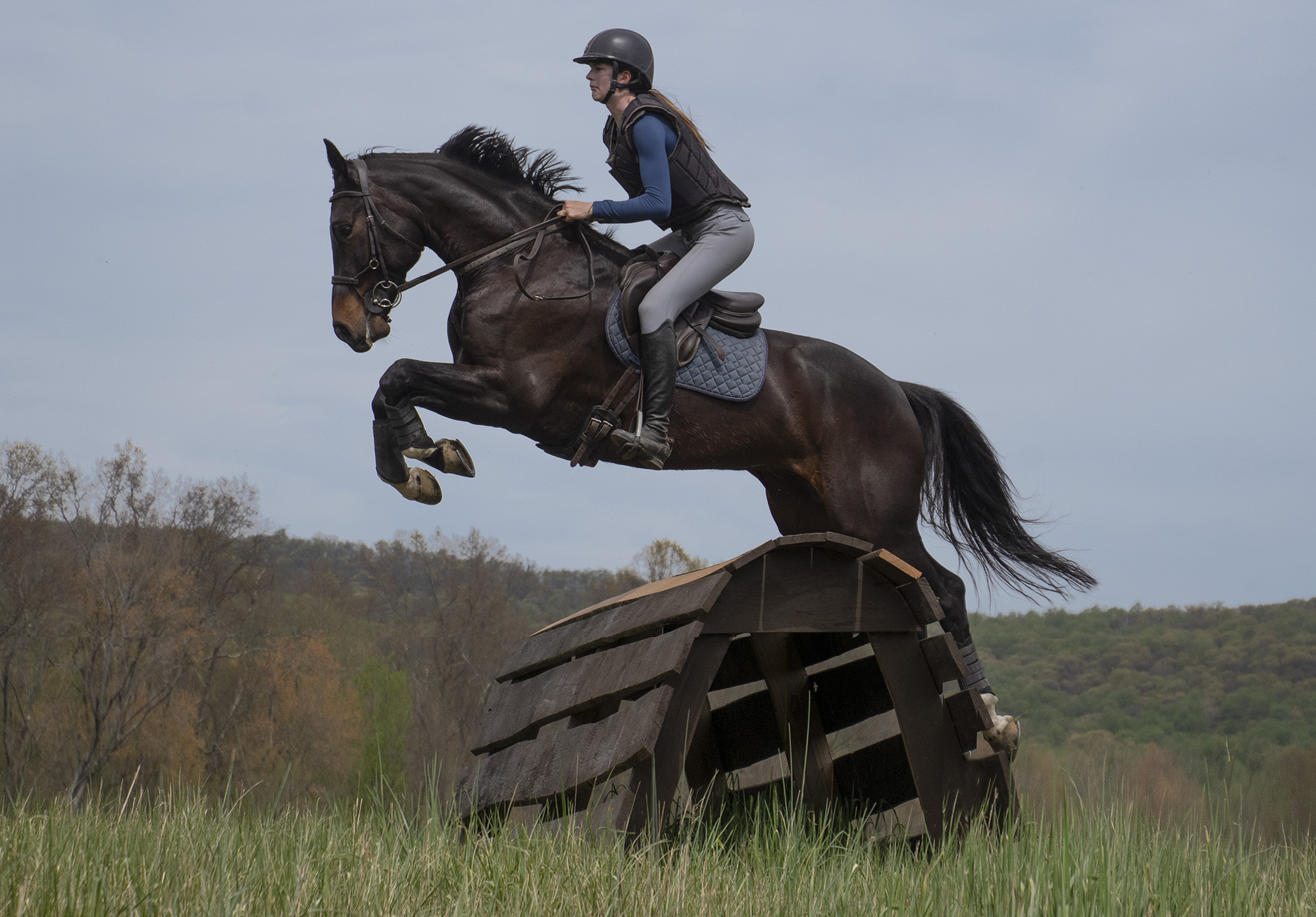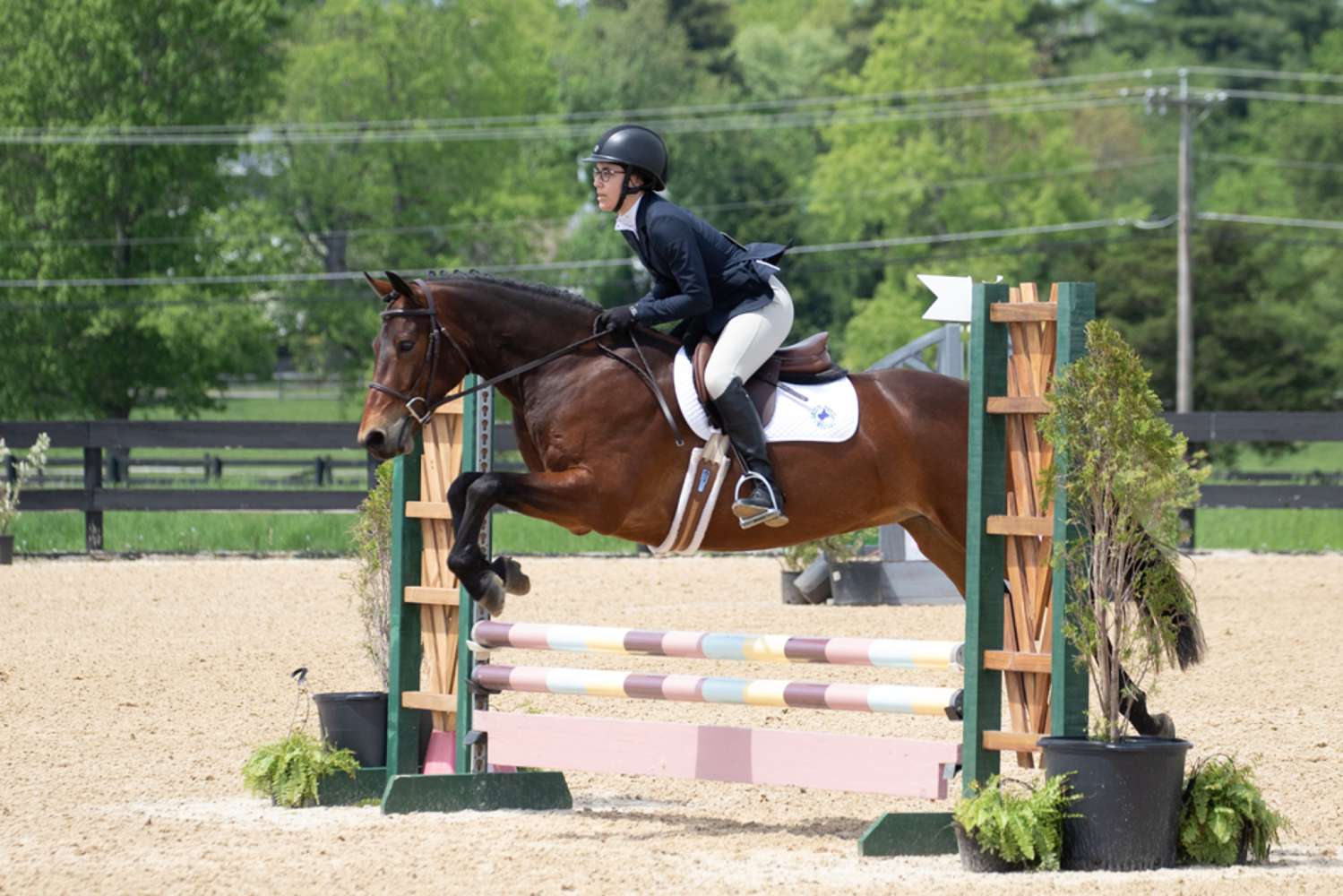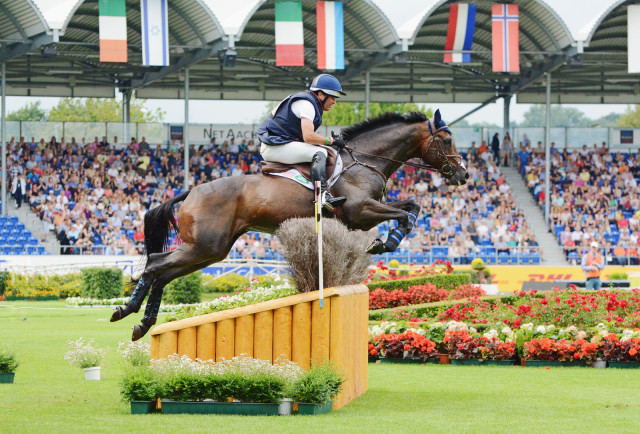 Phillip Dutton and Fernhill Cubalawn at Aachen. Photo by Jenni Autry.
Phillip Dutton and Fernhill Cubalawn at Aachen. Photo by Jenni Autry.
Phillip Dutton, Derek di Grazia, David O’Connor and Leslie Law all spoke about cross country training to the USEF High Performance riders today at the USEA Annual Meeting & Convention in Fort Lauderdale, and in my mind it was easily one of the best High Performance sessions in recent years.
To have these four strategic cross country minds come together and talk shop was a real treat, and my notes from the session total more than 3,000 words. With that in mind, I’ll be bringing you a report on today’s High Performance session in two parts. As Phillip Dutton spoke the longest, he’s first up.
Keep in mind that Phillip made these comments in the context of speaking to the High Performance riders, but you can glean many nuggets of wisdom from his comments whether you ride at Beginner Novice or Advanced level.
Keep scrolling to the end to see diagrams of some of Phillip’s favorite cross country jumping exercises you can set up in your own arena at home, and stay tuned for much more from the #USEAConvention.
#USEAConvention: Website, Schedule, EN’s Coverage, Instagram, Twitter
Holding on the Jump
Phillip said one of the things he was told early on in his career is that “a horse should never have a refusal in his whole entire life” if he is taught to always go forward and stay locked on the jump.
“Whatever I ask my horse to do, I have to make sure he can do it, that I’m asking him in the right away, and that he stays confident. The horse has to understand he’s got to go. You can make it difficult, but I’m never making it so difficult that I’m asking the horse to run out. I’m always teaching him to go,” he said.
“Horses want to jump cleanly, so put the emphasis back on the horse. Use their instincts. They want to figure it out. The answer is not a bigger bit. Training your horse to hold on a jump is crucial.”
Phillip said the goal for riders needs to be that “even on the biggest, strongest pulling horse, you can still drop the reins and he’s going to go,” and winter is an excellent time to work on this. “At the moment with my horses coming back into work, I do a lot of trotting jumps. The horse can’t leave a stride out trotting jumps. Go back to basics and make the horse understand that they hold on the jump.”
Phillip also emphasized that riders and horses both must learn to go around cross country at a slower speed first before going fast and pushing for time. “We don’t want horses jumping around just because their adrenaline is up. You want to teach them to go around with poise and concentration. It’s not about always going flat out; pick and choose when you go fast. The horse and you have to be able to go around the course controlled and slow before you can go fast.”
Rider Position
Phillip said he is constantly working on his own cross country position, and he said he rides in a certain position for the critical reason that it gives him a higher probability of staying in the saddle should things go awry on course.
“You don’t generally fall off backwards. Most of the time gravity is pushing you forward, so I try to stay a little bit back all the time. You have to be prepared for the unexpected. If you’re in a braced, cautious position, you have a better chance to stay on and also stay effective. In a combination, if you get put out of position you have less of a chance of getting through it. Being in a more defensive position is better. A forward position looks good in the pictures, but it doesn’t always help you on cross country.”
Phillip also said that he thinks riders need to practice more when it comes to galloping fences out of stride, which he estimates generally makes up about 60 to 70 percent of the jumps on courses.
“What I’ll be doing this winter is coming down to jumps on an open stride and picking that up easily,” he said. “That shouldn’t be something where you need to use your hand at the jump. Getting good at riding to a jump without pulling back is crucial, and it’s all practice.”
Course Walking & Speed
When walking a cross country course, Phillip said it’s important for riders to understand what the course designer is trying to achieve. “Most of the time if you can ride the course how they’re trying to get you to, it will ride better. Knowing what the course designer is trying to do is always a good thing,” he said.
“It’s important to be able to walk a course and know what the striding is in meters or yards. Know if it’s a yard short or a yard long or two yards long. Get a tape measure and figure out what your own striding is when you walk the course. Understand yards and put some time into it.”
Phillip also said it’s important for riders to walk the course with someone “who speaks the same language and knows how you ride.”
When looking for places to make up time on course, Phillip said quickly accelerating away from the jump on the landing side can make up valuable time. “In the spring if you don’t push your horse for time at some of the events, you can still work on your craft by practicing getting away from the jumps quickly.”
The next step to making up time is on the approach to the jumps, Phillip said. “It’s much harder to save time on the approach to jumps because then you add risk to the jump, so that’s the last part you want to be working on to save time. As you get better and better and your horse becomes more experienced, you can work on a faster approach. Practice at home giving yourself less time to set up for a fence.”
The final piece of the time puzzle is speed, Phillip said. “If you’ve got a good galloping horse, we all utilize that speed. But to become a great cross country rider, if you can utilize those other areas first you will be a better rider for it.”
Bits
Phillip said his goal for his own horses is to be able to school cross country at home in a snaffle. “If you teach the horse to be able to jump cross country in a snaffle, the bit you’ll use in competition will be more helpful. If you keep using bigger bits, the horse will just keep getting stronger.”
While Phillip favors snaffles, he did note that other bits are helpful for rebalancing certain horses. “Some horses tend to be a bit downhill, and bits to elevate them are helpful. Others that are a bit above can keep them rounder on the approach to the jump. The less you can do with your bits in your training will help you. You’ll get more effect in your competition.”
Studs
“Nothing is worse for a horse’s confidence than when he’s slipping. The downside of studs is they can make the horse more prone to injuries and the horses can cut themselves, so you need a balance to have enough to keep them from slipping so they don’t lose confidence,” he said.
“We don’t get a lot of experience riding in heavier conditions in the U.S., but if it does get wetter, rather than saying, ‘It’s too wet so we should withdraw,’ everyone should embrace that. Practice what it feels like when they’re slipping. Once you go to Europe it becomes a lot more standard to compete in those conditions.”
With front studs, Phillip said to use the same size studs on both sides of the horse’s front feet so the foot can land evenly on the ground after jumping.
Mental Approach
Phillip said he personally uses a different mental approach for cross country than he does in dressage or show jumping. “Before I go out cross country, I want to feel as if I’m really sharp and ready to react. You can walk the course as much as you want, but it doesn’t always go to plan, so you have to be able to react. Having yourself mentally quick and sharp is very crucial,” he said.
“How you go about that is different for everyone. There’s no one right or wrong away, but working on that is important. You can have all the talent in the world, but if you don’t actually operate on the day then that’s no good at all. Be mentally prepared and ready to go.”
He also emphasized that the practice riders do at home should help build their confidence and mentally prepare them to compete. “Going out there and believing in yourself and having faith that it will work out, there’s a mental side to that put also a practiced side,” he said.
“Surrounding yourself with the right kind of people is important as well. With grooms, you want someone who is part of your team — someone who is going to be there helping you mentally be the best on the day.”
Training Exercises
Winter is an excellent time to set up cross country training exercises in your arena to get ready for the new season, Phillip said. “It’s better footing and in a controlled area, and you can adjust the jumps a lot more. There’s a lot that you can do to improve your cross country riding and your horse and your training in the arena.”
Keep scrolling for two adjustability exercises and two general jumping exercises. Then go forth and set these exercises up in your own arena! Happy Practicing. Go Eventing.

Exercise #1

Exercise #2

Exercise #3

Exercise #4










